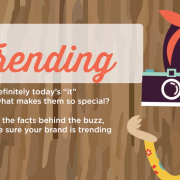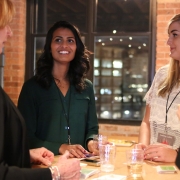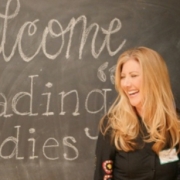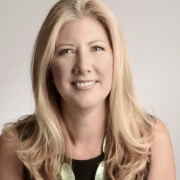Next-Gen Marketing: 5 Insights That Will Help Your Brand Win With Gen-Z Women
Since the launch of The SheQ™ Test, Seed has been busier than ever helping our clients better understand and meet the needs of today’s female consumers. In most circumstances, that has meant focusing specifically on Millennial women—after all, Millennials have become the defining segment of the modern economy.
And while Millennial women are certainly still deserving of marketers’ attention, it’s officially time to cast our gaze towards the next generation of female-powered spending. Gen-Z is on the rise and these women are going to have even more buying power than Millennials.
Born between 1995 and 2010, Gen-Z comprises 26% of the population (versus 22% for Millennials).[1] While Gen-Z women range from ages 8 to 22, most research is now honing in on Gen-Zers aged 13 and up.
Because they are still relatively young, it’s clear that members of this generation are still defining themselves as consumers. But as they grow, mature and… shop… it’s important to keep up with the trends, habits and tensions that make them unique as a group.[2] And some interesting patterns are already coming into focus…
In fact, we’ve uncovered 5 unique insights that define Gen-Z women as consumers. No doubt, Gen-Z women will evolve as they progress in their lives and careers, but we believe that these insights represent foundational values that will continue to define this generation well into the future.
Full disclaimer: Because not every person in the demographic can be defined by the same characteristics, it’s important to practice caution when marketing to large demographic segments. Nevertheless, we believe it is crucial—and prudent—to observe behavioral trends in specific generational groups and understand how these impact their purchase decisions.
Okay, now that that’s out of the way, on to the insights…
1. They’re strategic spenders. Though a lot of their spending money may appear to come from their parents, this is mainly limited to big-ticket items (e.g., car, school, insurance). The bulk of their everyday pocket-change is their own hard-earned money—so it’s no surprise they put a lot of thought into how they spend it. In fact, many Gen-Zers classify themselves as savers. They feel guilty when they spend on unnecessary items, or things that don’t offer a unique and worthwhile experience. They love taking advantage of sales and apps that provide discounts on their purchases. For them, it’s all about getting the best bang for their buck.
2. They have redefined “value.” For Gen-Z women, social equity and experiential significance define their sense of value—especially if these come at a reasonable price. This cross-pollination of digital showmanship and everyday exploration comes to life in the humble brag: posting on social media about experiences and products deemed to have a “cool factor.” Nevertheless, Gen-Z women are still very particular about how much they’re willing to spend on any given purchase. Thus, they have developed what we call the “price-point sweet spot”—this reflects how much they’re willing to spend (how much value they ascribe to something)—based on how long they they’ve wanted it or how necessary it is, from a practical standpoint.
3. They’re future-focused. Growing up in the recession has left most of Gen-Z with a future-conscious outlook on life—especially as it relates to matters of finance. Research shows Gen-Z women are concerned about money from a younger age, and they’re starting to get jobs earlier (see point #1). Financially, they feel uncertain about the future, so: they’re nervous and trying harder to understand the challenges that lie ahead, they take money more seriously, and they take steps to ensure they’re doing everything right. On the same note, they do their research because they want to make sure all of their questions are answered before they commit to a purchase.
4. They don’t like being sold to. They want brands to act, feel and be authentic—by giving back to the community and showing respect to their customers. So, big brands should make a concerted effort to show Gen-Z women that they’re in it for more than just the money. Furthermore, they should focus on offerings that validate Gen-Zers’ pain points without seeming patronizing or condescending.
5. They demand hyper-personalized experiences. Individualism is a defining aspect of this generation—especially with women. Social media projects a vast and endless sea of posts and profiles… and they’re constantly trying to stand out from their peers. So, brands can build trust with Gen-Z women by indulging their penchant for personalization. They love customizable… everything. Apps, services and experiences that can be fine-tuned to precisely defined specifications—all from inside the home. As a caveat, brands should be careful not to violate their privacy. Some Gen-Z women feel that using data from private channels (like Facebook Messenger and Instagram Direct) is actually an invasion of their privacy.
Do you have any insights on Gen-Z women? We’d love to discuss your take on this emerging generation of consumers!
Interested in learning more about The SheQ™ Test? Contact Cherri Prince or Lauren Selman for more information.
[1] (https://marketingland.com/move-millennials-gen-z-now-largest-single-population-segment-219788)
Editor’s Note: Special thanks to our former Strategy Summer Associate, Emma Mitchiner, for her significant research, thinking and contributions to this article.
Written by Matt Donahue. As a member of Seed’s copywriting team, Matt marries his love for creative writing with a keen interest in product innovation, technology and science. He’s a graduate of Seton Hill University’s “Popular Fiction” master’s program and writes whenever he can.
Edited by Adam Siegel. In addition to being the Editor of The Accelerator, Adam is a Creative Director at Seed Strategy where he draws upon his diverse experience in advertising, research and innovation to craft breakthrough creative and winning concept copy.
Connect with us! Follow Seed Strategy on our LinkedIn, Twitter, Facebook and Instagram pages.




![TMRE_Linked4[1] Picture of Cherri Prince and Lauren Selman plus the TMRE logo](https://seedstrategy.com/wp-content/uploads/2017/10/TMRE_Linked41-180x180.jpg)



![SheQ_SocialPost-03[1] The SheQ™ Test: What do women really want?](https://seedstrategy.com/wp-content/uploads/2018/03/SheQ_SocialPost-031-180x180.jpg)



